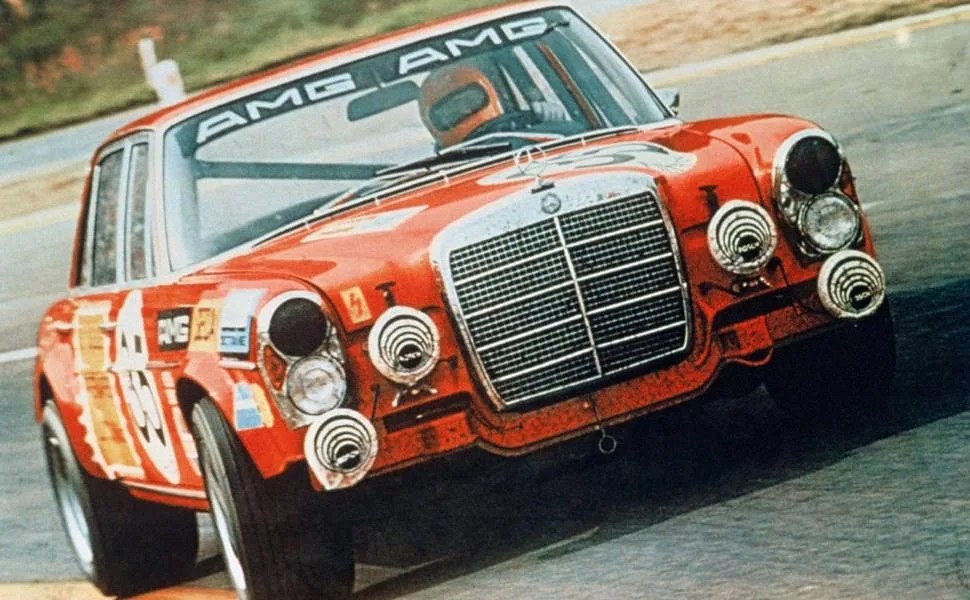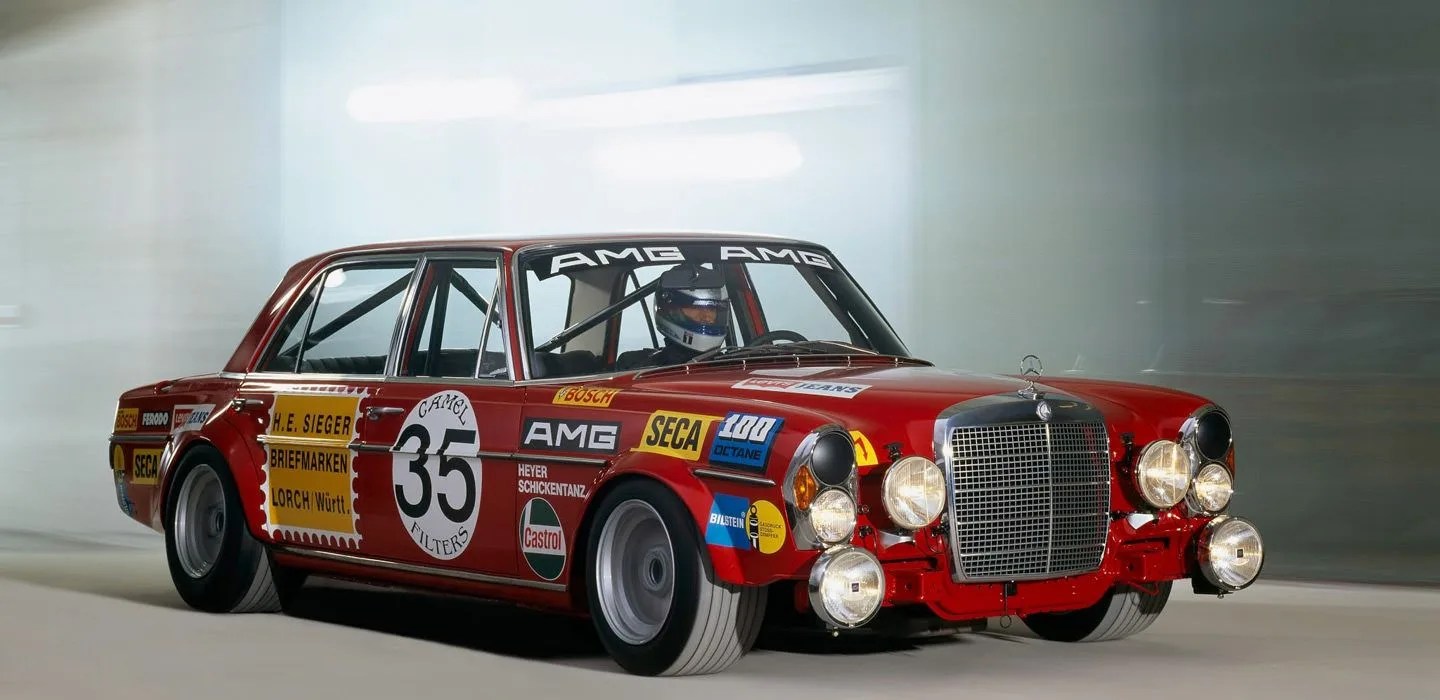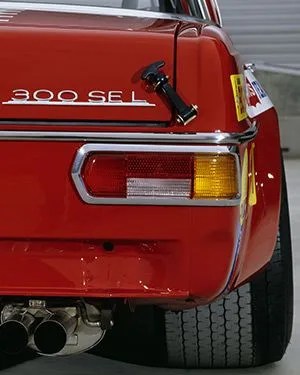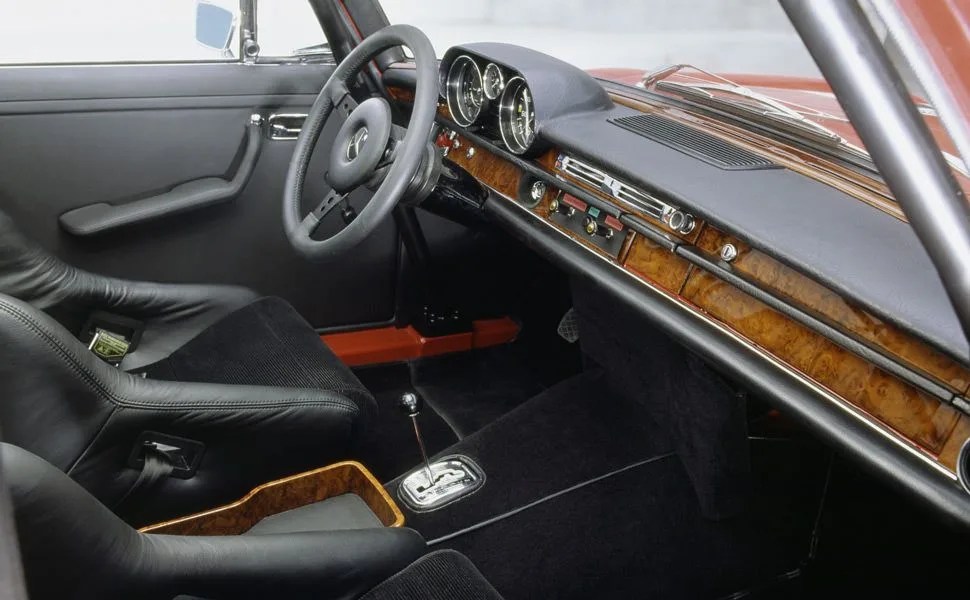Today, AMG is known worldwide for the tarmac-shattering SLS and the brilliant new GT, as well as being Mercedes’ own performance tuning division. But how three little boldfaced letters became synonymous with high-performance German metal is significantly more grassroots. AMG, or Aufrecht Melcher Grossaspach, began with Hans Werner Aulfrecht and Erhard Melcher. The two were ex-Mercedes engineers who knew the inner workings of Mercedes-Benz cars at a masterful level. As Stuttgart alumni, they took to tuning existing Mercedes and went racing on the weekends to discover the true limits of automotive performance. The first car professionally raced by the pair under the famous acronym was the AMG 300 SEL 6.8, affectionately known as “The Red Pig”.
Based on the fairly large Mercedes-Benz 300 SEL 6.3, Aufrecht and Melcher worked their magic on the underpowered oil-tanker-with-wheels and turned it into a race-winning machine. As unorthodox as it was, the Red Pig put Aufrecht’s and Melcher’s names on the map and began AMG’s longtime obsession with mountainous power and clever innovation.
What It’s All About
In the ‘70s, European sports car racing was dominated by the small and nimble. Large sedans were nearly non-existent on the track because of their abundant use of heavy steel, which made the lumbering sedans the antithesis of a successful racecar. At the Red Pig’s maiden race, the 1971 running of the 24 Hours of Spa, the pit lane was peppered with lightweight

euro-coupes — Ford Capris, Alfa Romeo GTAs and BMW CSs. The AMG 300 SEL 6.8 didn’t exactly need the bright red paint job to help it stand out: the crimson behemoth had a footprint that swallowed most of the competition and a 6.8-liter V8 that more than doubled the displacement of any other car on the grid.
Granted, the race cars of yesteryear were significantly less fuel efficient and were lacking in engine life and overall mechanical integrity. But the principal for success in endurance racing has always remained: less time spent in pits means more laps on the track, which earns a better shot at victory. The Red Pig guzzled gas so fast it made oil rig fires look economical.
With its river barge proportions, it used up tires almost as quickly. So when the AMG took to the track it seemed counterintuitive to the entire idea of long distance racing. All the more reason the world took notice when AMG and their red 300 SEL 6.8 won first in its class and second overall at the 24 Hours of Spa.


